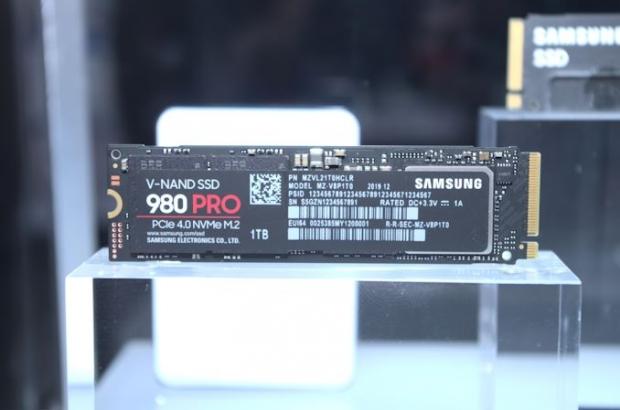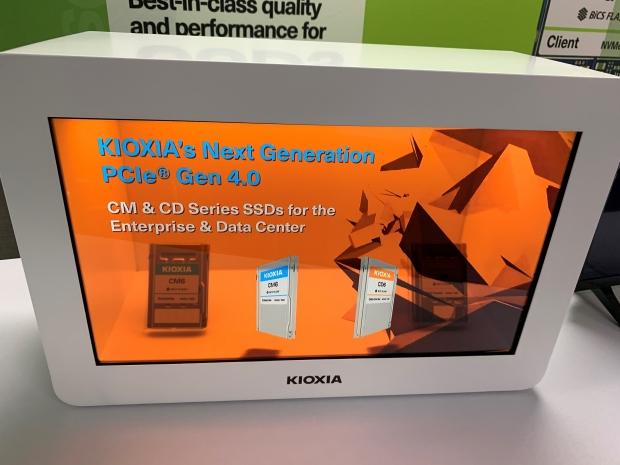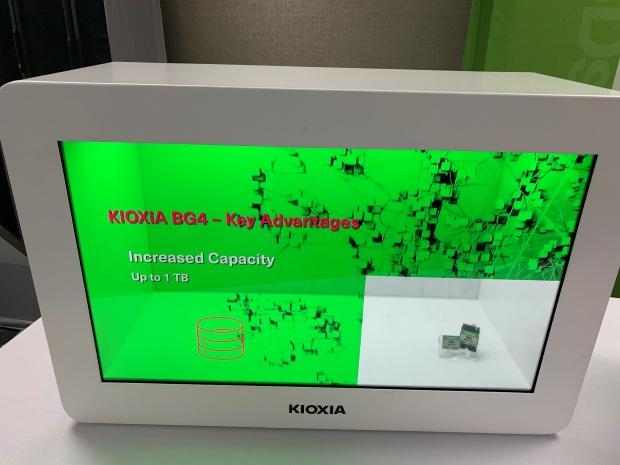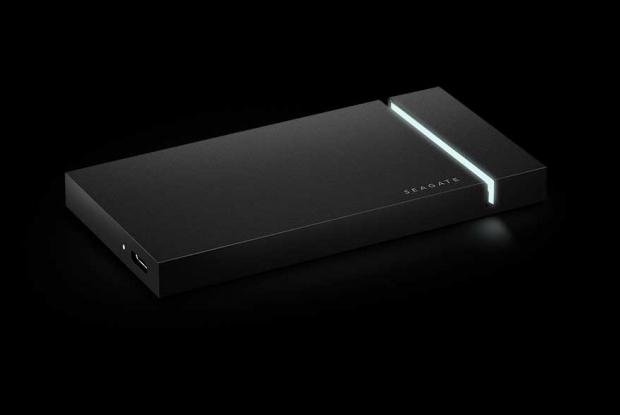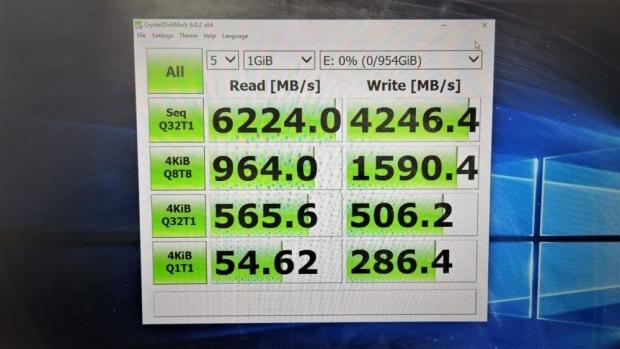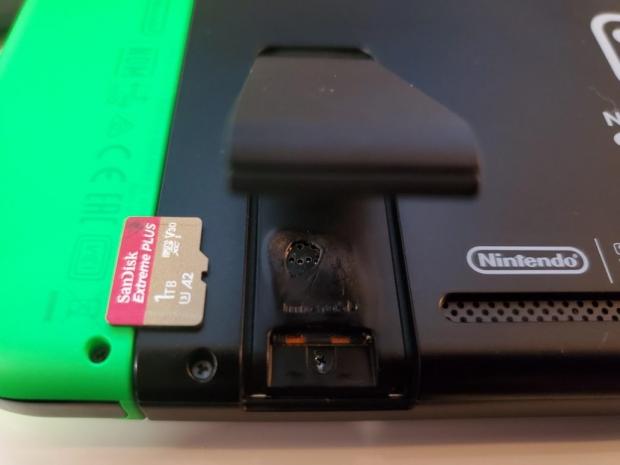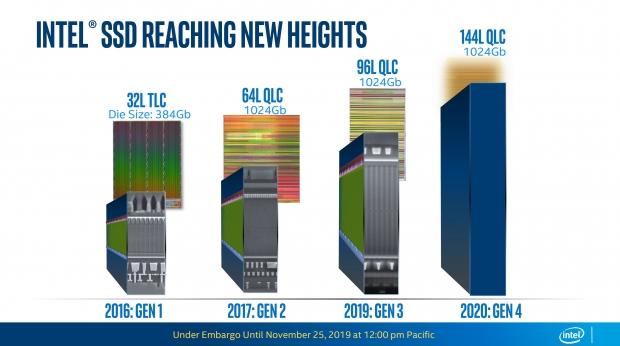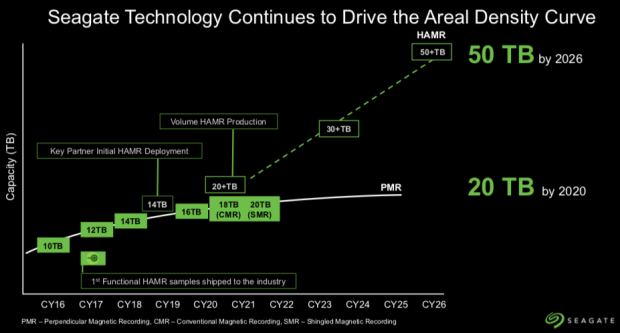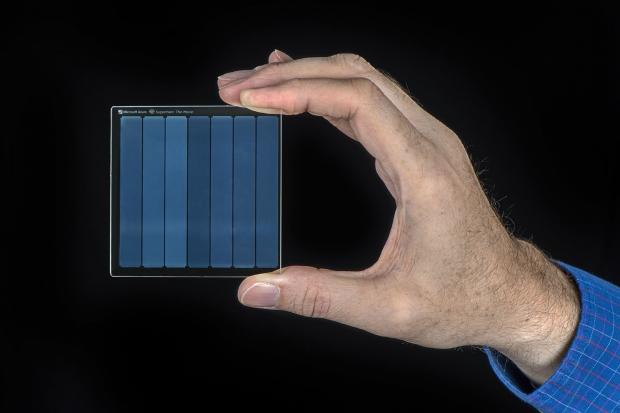Storage News - Page 36
Phison at CES 2020, up to 8TB M.2 along with 16TB SATA QLC powered SSD
CES 2020 - Phison is one of those brands that you may have heard uttered during the AMD Ryzen 3000 and X570 chipset launch as it was the primary driving force behind the first run of PCIe generation 4 NVMe SSD's or PCIe 4x4. Phison, however, was at CES showing their QLC enablement on various platforms from the newest and fastest Gen 4x4 to 3x4 and even SATA technology which, when mixed with proper QLC based NAND, they have been able to achieve some surprising densities.
Here we have both the M.2 variant and the 2.5" SATA models with capacities of 8TB and 16TB, respectively. The Phison PS5012-E12S controller powers the M.2 at 8TB while the 2.5" SATA variant is shown as working and capable os up to 16TB capacities using the Phison PS3112-S12 controller. Both of these drives are outfitted with Micron M28, 96-layer QLC NAND.
Here we have some results displayed at the Phison suite at CES 2020, showing S12, S13, and E12 controllers and their relative performance with QLC equipped.
Continue reading: Phison at CES 2020, up to 8TB M.2 along with 16TB SATA QLC powered SSD (full post)
Samsung new PCIe 4.0-based 980 PRO SSD teased: 6.5GB/sec read speeds
CES 2020 - Samsung was showing off its upcoming flagship consumer SSD at CES 2020, with the new 980 PRO M.2 NVMe SSD based on the new PCIe 4.0 standard.
Samsung's new 980 PRO M.2 NVMe SSD will be pushing some huge sequential read/write speeds, with the company promising up to 6.5GB/sec reads, and up to 5GB/sec writes. Samsung will be making its new 980 PRO M.2 NVMe SSD available in 250/500GB and 1TB capacities.
We're already seeing a ceiling being hit of around 5GB/sec on these new PCIe 4.0-based SSDs, but Samsung is pushing a new boundary here up at 6.5GB/sec. Later this year we'll see the next-gen Phison E18 NVMe SSD controller, which will unlock up to 7GB/sec on both read/write. Samsung said it will have more information on its new 980 PRO M.2 NVMe SSD in Q2 2020.
Continue reading: Samsung new PCIe 4.0-based 980 PRO SSD teased: 6.5GB/sec read speeds (full post)
KIOXIA unveils enterprise-class storage solutions during CES 2020
CES 2020 - KIOXIA America had a substantial showing of their new enterprise flash solutions during CES 2020 at their suite in the LINQ in Las Vegas, Nevada.
KIOXIA has new PCIe Gen 4 SSD's for enterprise and datacenter with their new CM & CD models. These units are not AIC's or M.2 interface but U.2 (formally SFF-8639) and are visually similar to the SATA Express connector.
All of KIOXIA's enterprise SSD's use BiCS flash and can range in capacity up to an insane 30TB+ per unit (for the CM6)! Endurance also has a pretty wide span ranging from .5 DWPD (Drive Writes Per Day) up to 3 DWPD.
Continue reading: KIOXIA unveils enterprise-class storage solutions during CES 2020 (full post)
KIOXIA showcases its new storage and more at CES 2020
CES 2020 - KIOXIA is not a name that everyone will be familiar with, but their previous namesake Toshiba may be more familiar to you. KIOXIA formally Toshiba showcased some of its newest storage products and technologies during CES 2020 at The LINQ in Las Vegas, Nevada.
First up is the BG4, which is an ultra-small form factor storage solution with capacities up to 1TB. The BG4 solutions utilize 96-layer BiCS flash and can be had as an M.2 2230, which is a flash module on an ultra-small M.2 module or as 1620 BGA package. The BG4 series of flash storage operate with an NVMe PCIe gen 3 x4 interface and can achieve performance up to 2,300MB/s sequential read, and 1,800MB/s write ( up to 390K IOPS read and 200K IOPS write).
The BG4 is designed for ultra-compact notebooks or other devices where a minimal storage footprint with a high-speed interface is needed.
Continue reading: KIOXIA showcases its new storage and more at CES 2020 (full post)
Seagate's new Firecuda Gaming external SSD hits up to 2GB/sec speeds
CES 2020 - Seagate today revealed a new SSD duo that can supercharge gaming on-the-go.
Seagate just announced two new external SSDs optimized for gamers out and about: the Firecuda Gaming SSD, which packs a super-fast FireCuda NVMe 510 SSD for up to 2GB/sec speeds over USB 3.2 Gen 2x2, and the Barracuda Fast SSD that can hit rapid read/write speeds of up to 540 MB/s.
Both of these SSDs are meant to sit alongside Seagate's innovative Firecuda Gaming Dock, a massive 4TB storage nexus that hooks up to your PC and other devices via Thunderbolt 3 to deliver high-end storage speeds. It even has an expandable M.2 NVMe drive just in case you need more lightning-fast speeds.
Continue reading: Seagate's new Firecuda Gaming external SSD hits up to 2GB/sec speeds (full post)
Lexar working on new SSD for 2020: pushes 7GB/sec
Lexar is planning for a massive year in 2020 with rumors pegging the company to launch a new PCIe 4.0-based NVMe SSD which is capable of 7GB/sec reads... exceeding the 5GB/sec we're seeing on the market now.
Lexar has been teasing a new prototype SSD t hat pushes 7GB/sec in IOMeter, and pushes 6442MB/sec in sequential reads in CrystalDiskMark, while pushing 4246MB/sec in sequential writes. Lexar itself has said the final retail version of this SSD will have close to the same speeds as it does in its current prototype form.
Right now, the fastest SSD in Lexar's product stack is the Lexar NM610 -- which comes in 250GB, 500GB, and 1TB capacities. Lexar's current flagship NM610 SSD reaches just 2.1GB/sec reads and 1.6GB/sec writes, so this new SSD is over 3x faster in reads alone which is a gigantic upgrade. 7GB/sec is no joke.
Continue reading: Lexar working on new SSD for 2020: pushes 7GB/sec (full post)
SanDisk 1TB microSD cards MELTS Nintendo Switch console
It seems Nintendo is in some hot water over a Switch user installing a SanDisk microSD card into his Nintendo Switch, which then promptly melted and destroyed his portable gaming machine.
Nintendo Switch owner 'NefariousZhen' said on the Nintendo Switch subreddit that he installed a brand new SanDisk Extreme PLUS 1GB microSD into his Switch, which then burned a hole in it. He said: "I thought that I was getting a good deal on Black Friday when I bought a 1TB micro sdxc card. Apparently not! It melted the switch the first time I turned it on after installing (it was off as required). Switch is at version 9.1.0".
The microSD card that he used wasn't a cheap one either, with the SanDisk - Extreme PLUS 1TB microSDXC UHS-I costing $400, more than the Nintendo Switch on its own. The Nintendo Switch was out of warranty, but good guy Nintendo has stepped up and said they will replace the burned-out Switch.
Continue reading: SanDisk 1TB microSD cards MELTS Nintendo Switch console (full post)
Intel bring next level QLC performance and endurance with the 665P SSD
For those who do not know, QLC NAND or Quad Level Cell NAND has been the bridge to bringing a truly value option to high-speed storage. QLC has been introduced in everything from Samsung QVO to Intel's 660P offerings, among various others. QLC allows for more bits per cell, therefore, increasing overall density for a NAND package. This did, however, come with some caveats such as reduced endurance.
I don't want to dive into everything that has to do with QLC and how it works as that's a deep-dive topic and not what we are talking about today, but I will try to cover it in the following few sentences briefly. So, with that said, SLC or single-level cell was the first NAND tech that was released with the introduction of SSDs.
These SLC parts stored a single bit of information, which in turn allowed for two states, one and zero. Next up was MLC, which doubled the available capacity per cell with four states possible but at the cost of potential performance. Next after that was TLC, which once again doubled up things for up to 8 states with three bits per cell.
Continue reading: Intel bring next level QLC performance and endurance with the 665P SSD (full post)
Seagate will have 50TB HDDs by 2026, 18TB and 20TB launch in 2020
Seagate is teasing some gigantic HDDs for 2020, with the first half of 2020 seeing the storage giant unleash 18TB HDDs into the world, but by the end of 2020 we'll be seeing even bigger 20TB HDDs.
The company is headed towards releasing the first commercial HAMR-based HDDs in the second half of 2020, while the new 18TB drive will be based on the same 9-platter platform that Seagate uses for its current Exos 16TB HDD. This means that Seagate has everything it needs to put 18TB HDDs into mass production before HAMR arrives in 2H 2020.
Seagate will be putting many more eggs into the HAMR basket going forward, with its own 30TB+ HDD planned for 2023-2024 and an even bigger 50TB+ based on HAMR in 2026. The one thing I think of when I see 50TB is image losing 50TB of data in a single drive... that is millions of photos, videos, and untold billions of files gone in an instant. Still, from a tech perspective -- 50TB in a single drive, WOW.
Continue reading: Seagate will have 50TB HDDs by 2026, 18TB and 20TB launch in 2020 (full post)
Microsoft teases new glass-based storage with 1978's Superman on it
Microsoft has teased a new glass-based storage medium in 'Project Silica' that sees the company storing data onto glass plates that will last for 100s of years. The glass has been baked in ovens, dropped into boiling water, heated up in a microwave and even scratched with steel wool -- but like Superman, it's damn near invincible.
The first thing to be stored on the glass-based storage is Superman: The Movie from 1978, with glass square that contains Richard Donner's timeless classic measuring in at 7.5cm x 7.5cm x 2mm and holds 75.6GB of data.
Glass-based storage might seem weird but it makes sense, as archived master copies of films are normally only touched when they're moved out of storage to be remastered. Film isn't the most stable or secure storage method and it's far from a long-term solution, so older movies sitting in Hollywood studios being moved onto glass-based storage like Project Silica makes sense.
Continue reading: Microsoft teases new glass-based storage with 1978's Superman on it (full post)


